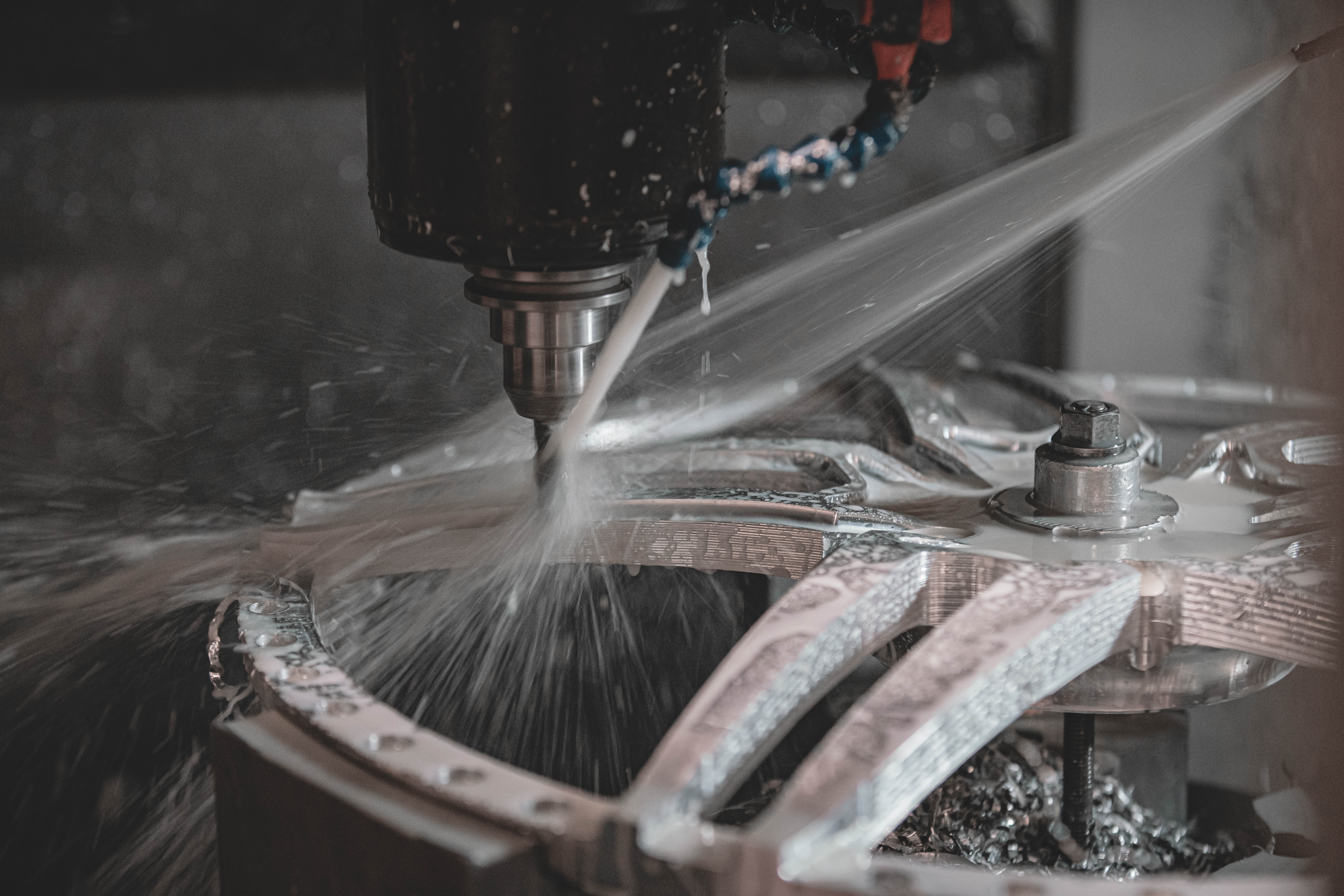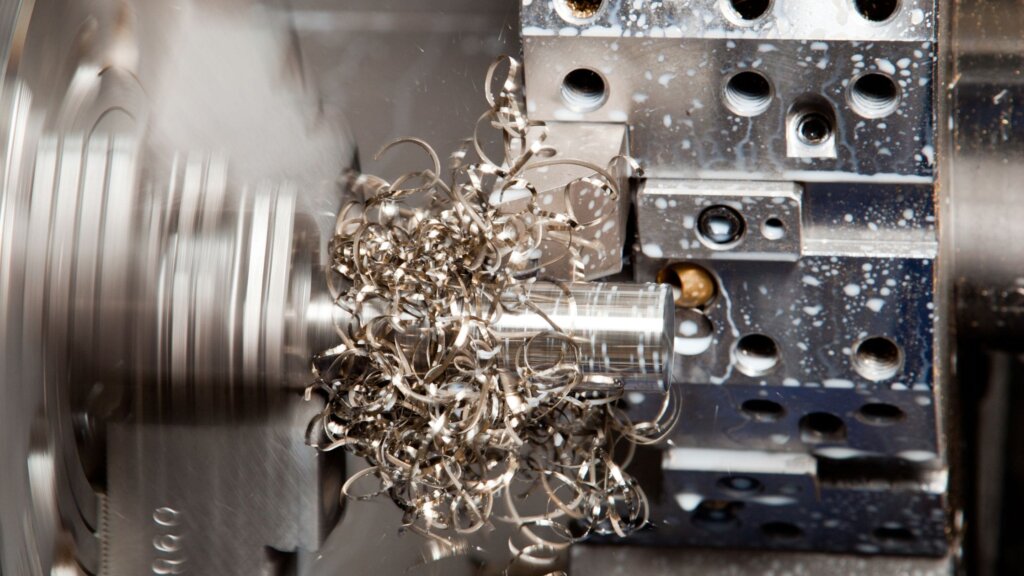Fasteners and Machining: Secret to Effective and Trustworthy Manufacturing
Fasteners and Machining: Secret to Effective and Trustworthy Manufacturing
Blog Article
Unveiling the Complexities of Fasteners and Machining Procedures for Ideal Efficiency
In the realm of engineering and manufacturing, the option of fasteners and the details of machining procedures play a crucial function in determining the supreme efficiency and sturdiness of a product. From the apparently simple task of choosing the best kind of bolt to the complicated accuracy machining techniques employed, every action in this procedure needs meticulous focus to detail. As we begin on this expedition right into the world of bolts and machining, we will certainly uncover the refined yet essential factors that can substantially affect the performance and top quality of the final item, shedding light on the typically forgotten elements that can make all the distinction in achieving optimal efficiency.

Importance of Proper Fastener Selection
Choosing the appropriate bolts is important in making sure the structural stability and durability of any type of mechanical assembly. Fasteners play a fundamental duty in holding components with each other securely, with the ideal selection contributing considerably to the overall performance and dependability of the setting up. When picking fasteners, variables such as material compatibility, environmental problems, load-bearing capacity, and convenience of installation have to be very carefully considered to assure optimal efficiency.
Incorrect bolt selection can bring about a series of concerns, including helping to loosen, rust, and also structural failing. Using bolts that are not suited to the certain requirements of the assembly can endanger its capability and present security threats. Consequently, engineers and developers need to carefully review the application needs and choose fasteners that satisfy or go beyond the required requirements and requirements.
Furthermore, the appropriate fastener option procedure involves analyzing the joint style, prepared for lots, vibration levels, and potential thermal growth or contraction to make sure that the picked bolts can withstand the operating conditions efficiently. By focusing on correct fastener selection, producers can improve the high quality, longevity, and efficiency of their mechanical assemblies.
Types and Characteristics of Fasteners
A crucial facet of mechanical settings up lies in recognizing the varied types and unique features of bolts made use of in different industrial applications. Bolts are vital elements that hold frameworks together, making sure stability and capability.
Screws are threaded fasteners that are commonly made use of to join 2 or more parts with each other. Screws resemble screws yet are usually used with a nut to develop a protected joint. Nuts are internally threaded bolts that mate with screws to hold elements together. Washing machines are thin plates that distribute the lots of a fastener, preventing damages to the product being secured. Rivets are irreversible fasteners that are hammered or pushed right into location. Pins are made use of for positioning or to safeguard elements momentarily.
Comprehending the features of each sort of fastener is important for choosing the ideal one for a specific application, guaranteeing ideal performance and dependability of the mechanical setting up. Fasteners and Machining.
Accuracy Machining Strategies for Effectiveness
The complex style demands of various bolts demand utilizing precision machining methods for ideal effectiveness in making processes. Precision machining is important in guaranteeing that fasteners meet the specific specs needed for their intended application. One of the primary techniques click here for info made use of in accuracy machining is Computer system Numerical Control (CNC) machining, which enables high levels of accuracy and repeatability in the production of fasteners. CNC machines are qualified of doing complicated cuts and forming operations with minimal human treatment, leading to raised effectiveness and consistency in the production process.
By using precision machining strategies, suppliers can improve the high quality of bolts, minimize product waste, and enhance overall manufacturing performance. The use of sophisticated machining processes aids ensure that fasteners meet industry standards and customer expectations for efficiency and reliability.

Variables Influencing Machining Process Efficiency
Various variables play a significant duty in identifying the efficiency of machining processes in the production of fasteners. The very first essential element is the selection of cutting tools. Picking the ideal tools based on the material being machined, wanted coating, and cutting speeds can substantially impact the effectiveness and high quality of the machining procedure. Additionally, the cutting criteria such as reducing speed, feed rate, and depth of cut are necessary variables that affect performance. Fasteners and Machining. Optimizing these specifications based upon the details requirements of the fastener being generated is key to accomplishing exact and cost-effective machining.
Equipment rigidness and stability additionally play a vital role in establishing machining procedure efficiency. An experienced operator can make real-time changes, troubleshoot problems successfully, and make sure that the machining process runs efficiently, ultimately influencing the final top quality of the fastener.

Top Quality Control Measures in Manufacturing
Factors influencing machining process efficiency, such as reducing device option and maker security, straight effect the application of quality assurance actions in production. Quality assurance procedures are necessary in making certain that items meet the called for requirements and specifications. In the manufacturing procedure, numerous methods are employed to maintain top quality criteria. you can find out more Assessment and testing play an essential role in recognizing any kind of variances from the desired end result. Normal maintenance of machining equipment is likewise vital to promote quality assurance. Calibration of makers and tools is necessary to make certain specific and precise production procedures. Additionally, implementing standard operating procedures and methods can help in keeping consistency and top quality throughout the assembly line. Quality assurance determines not just concentrate on completion product yet also on every phase of the manufacturing procedure to stop mistakes and defects. By adhering to stringent top quality control measures, makers can enhance client complete satisfaction, build a track record for integrity, and eventually accomplish optimum performance in their machining processes.
Conclusion
In final thought, picking the appropriate bolts and making use of accuracy machining techniques are vital for ideal efficiency in producing procedures. Recognizing the kinds and qualities of fasteners, together with aspects influencing machining procedure efficiency, can cause enhanced effectiveness and quality index assurance procedures. By taking notice of these ins and outs, producers can accomplish higher levels of efficiency and integrity in their items.
In the realm of engineering and manufacturing, the option of bolts and the ins and outs of machining processes play a critical role in establishing the best efficiency and longevity of an item (Fasteners and Machining). One of the main methods made use of in accuracy machining is Computer Numerical Control (CNC) machining, which enables high degrees of accuracy and repeatability in the production of bolts. The use of advanced machining procedures assists guarantee that fasteners fulfill sector requirements and customer assumptions for efficiency and reliability
In verdict, choosing the right bolts and using precision machining methods are important for optimal efficiency in manufacturing procedures. Understanding the kinds and qualities of fasteners, along with factors affecting machining process efficiency, can lead to improved performance and quality control procedures.
Report this page